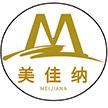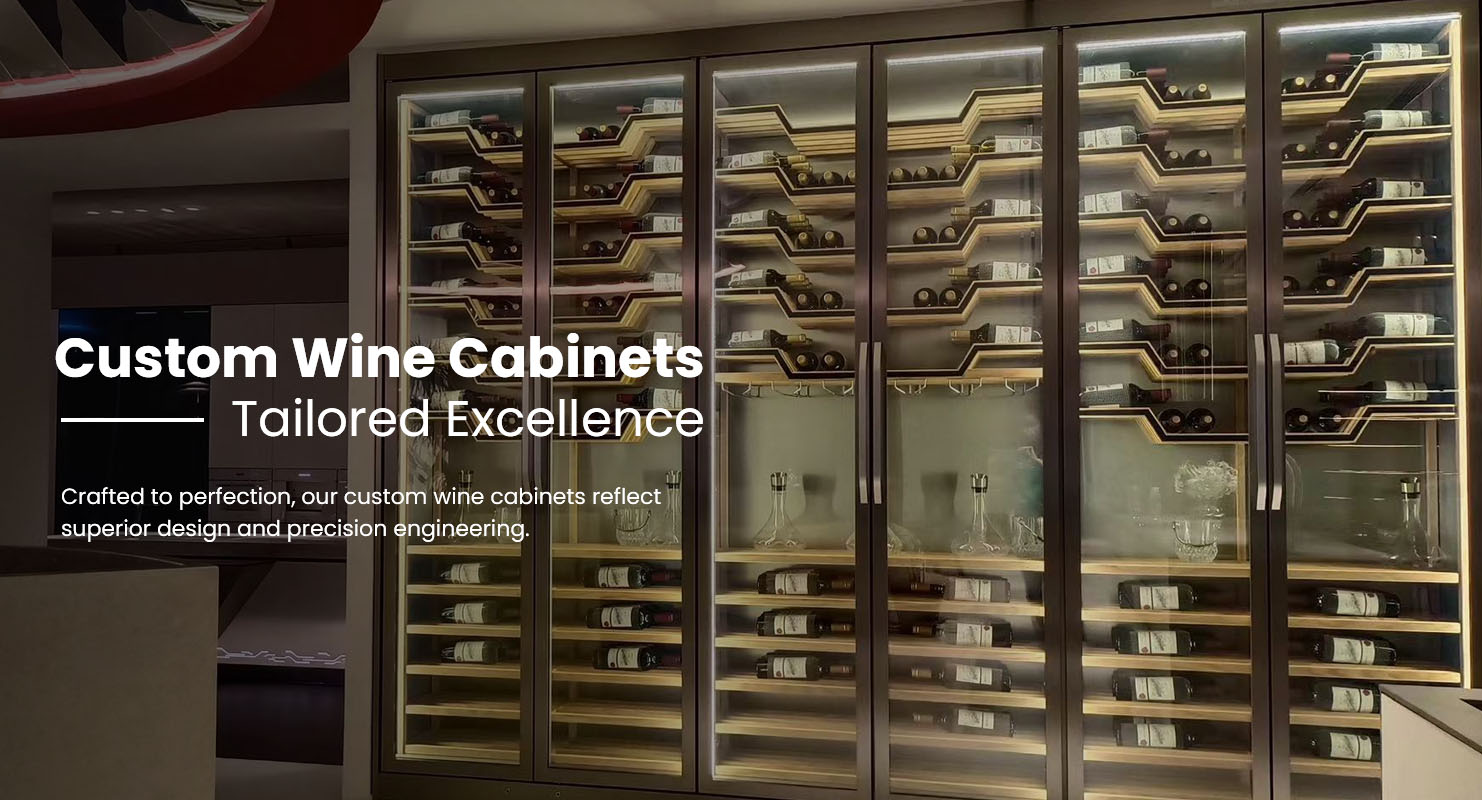What Is A Thermoelectric Wine Cooler
A thermoelectric Wine Cooler is a wine storage appliance that uses solid-state thermoelectric technology — rather than a compressor — to keep wine at a controlled temperature.
It operates quietly, with no vibration, and is ideal for small to medium-sized wine collections kept in temperature-stable environments.
Thermoelectric wine coolers are popular among casual collectors and home users who value energy efficiency, low noise, and gentle cooling for short- or medium-term storage.
1. How a Thermoelectric Wine Cooler Works
Thermoelectric wine coolers function based on the Peltier effect, a scientific principle that creates a temperature difference when an electric current passes between two types of materials.
Here’s how the process works:
Electric current flows through a Peltier module (a solid-state semiconductor).
One side of the module absorbs heat (cooling the interior), while the other side releases heat to the exterior.
Cooling fans circulate cold air inside the cabinet and expel warm air outside through a heat sink.
This simple yet effective system eliminates the need for compressors, refrigerants, or complex mechanical parts — making thermoelectric coolers lightweight, vibration-free, and environmentally friendly.
2. Key Features of Thermoelectric Wine Coolers
| Feature | Description |
|---|---|
| Cooling Method | Uses the Peltier thermoelectric module instead of a compressor. |
| Noise Level | Extremely quiet, typically below 35–38 dB. |
| Vibration | None — ideal for protecting delicate wine sediments. |
| Energy Efficiency | Consumes less electricity compared to compressor systems. |
| Temperature Range | Generally 10°C–18°C (50°F–65°F). |
| Ideal Usage | Small collections, home bars, or short-term storage. |
| Environmental Impact | Uses no refrigerants — 100% eco-friendly. |
WINTON’s thermoelectric models combine advanced semiconductor modules, silent fans, and double-insulated cabinets to deliver stable, noise-free cooling for home use.
3. Advantages of a Thermoelectric Wine Cooler
1. Ultra-Quiet Operation
Because there are no moving compressor parts, thermoelectric coolers run almost silently — ideal for bedrooms, offices, or living rooms.
2. No Vibration
The Peltier system has no mechanical movement, preventing vibration that can disturb wine sediment and affect aging.
3. Energy-Efficient
Consumes less power due to direct heat exchange, reducing overall electricity usage.
4. Lightweight Design
The absence of heavy compressors makes these units more compact and portable.
5. Environmentally Friendly
No chemical refrigerants are used; the cooling process is entirely electronic, producing zero ozone depletion potential.
4. Limitations of Thermoelectric Cooling
While thermoelectric systems offer many benefits, they also have certain limitations compared with compressor models:
Limited Cooling Capacity: Works best when ambient temperature is below 25°C (77°F).
Smaller Storage Volumes: Usually designed for 6–36 bottles.
Less Effective in Hot Climates: Cooling efficiency decreases in warm environments.
Higher Sensitivity to Airflow: Requires proper space around vents for heat dissipation.
For this reason, WINTON recommends thermoelectric models for home users in mild or air-conditioned settings, while compressor models are better suited for high-volume or commercial storage.
5. Thermoelectric vs. Compressor Wine Coolers
| Feature | Thermoelectric Cooler | Compressor Cooler |
|---|---|---|
| Cooling Power | Moderate | Strong |
| Noise Level | Very low | Low |
| Vibration | None | Minimal |
| Temperature Range | 10°C–18°C | 5°C–18°C |
| Best Ambient Temperature | Below 25°C | Any |
| Capacity Range | Small (6–36 bottles) | Medium to large (50–200 bottles) |
| Energy Efficiency | High | Moderate |
| Ideal Use | Small collections, home use | Long-term or professional storage |
Both cooling technologies serve different needs — thermoelectric for quiet, compact, short-term storage, and compressor for powerful, stable, long-term preservation.
6. Design and Construction
Thermoelectric wine coolers typically feature:
Slim Cabinets: Suitable for countertops or compact living areas.
Insulated Walls: Maintain stable internal conditions despite exterior heat.
Quiet Cooling Fans: Ensure even air circulation and temperature consistency.
Digital Temperature Displays: Allow easy monitoring and adjustment.
UV-Protected Glass Doors: Protect wine from harmful light exposure.
Removable Shelving: Adjustable racks accommodate different bottle sizes.
WINTON’s thermoelectric coolers are designed with low-noise fans, tinted glass doors, and elegant finishes, combining function with modern aesthetics.
7. Ideal Applications
Thermoelectric wine coolers are best suited for:
Apartment living and small homes where silence is essential.
Office or reception areas for discreet beverage storage.
Dining rooms or entertainment spaces for ready-to-serve wines.
Short-term preservation of red and white wines within mild climates.
For serious collectors or commercial users, compressor models remain the top choice due to their stronger cooling power and larger storage capacity.
8. Maintenance and Usage Tips
Keep ventilation areas clear — leave at least 10 cm (4 inches) behind the unit.
Avoid placing in direct sunlight or near ovens.
Operate in air-conditioned rooms for best performance.
Clean fans and vents periodically with a soft brush.
Avoid frequent temperature changes to maintain stable internal humidity.
With proper care, a WINTON thermoelectric cooler can deliver quiet, efficient service for over 5–8 years.
9. Frequently Asked Questions
1. What is the main difference between thermoelectric and compressor coolers?
Thermoelectric coolers use electronic modules instead of compressors, offering quieter and vibration-free operation for smaller capacities.
2. Can thermoelectric coolers store red and white wine together?
Yes, but since they usually have a single temperature zone, choose a mid-range setting (around 12–13°C) for balanced storage.
3. Are thermoelectric coolers suitable for hot climates?
Not ideal. Their cooling efficiency decreases when the room temperature exceeds 25°C.
4. Do they require maintenance?
Very little — just clean vents and ensure proper airflow periodically.
5. Are thermoelectric coolers energy-efficient?
Yes. They consume less electricity because the Peltier system directly transfers heat without using refrigerant gas.
Conclusion
A thermoelectric wine cooler is an eco-friendly, low-vibration, and energy-efficient solution for preserving wine in small to medium collections.
Its silent operation and compact design make it perfect for modern homes and offices, where style and quiet performance matter.
WINTON Wine Cooler designs premium thermoelectric models with advanced semiconductor modules, double insulation, and UV-filtered glass doors, ensuring both elegance and functionality for daily use.
Explore more at www.wintonwinecooler.com — where modern technology keeps every bottle at its perfect temperature, silently and efficiently.
Previous: What Is A Wine Cooler Alcohol


